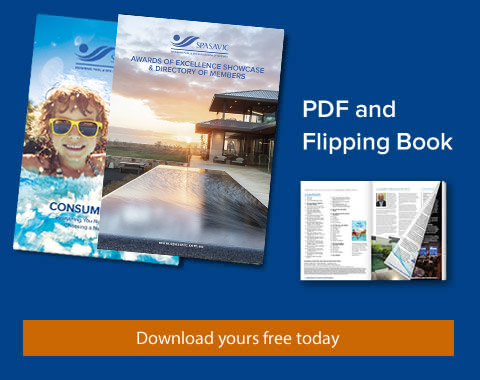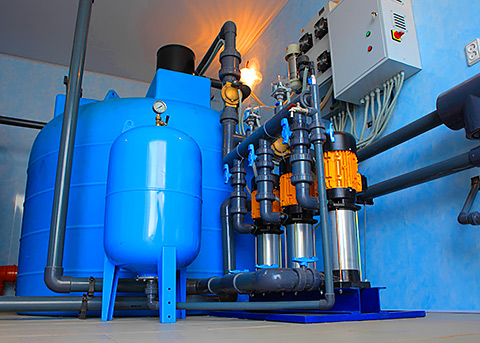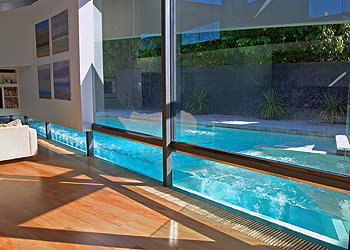Pools & spas are great fun and very tempting for curious children, however every pool & spa must have a barrier and every child must be supervised.
NEW LAWS TO IMPROVE SWIMMING POOL AND SPA SAFETY
The Victorian Government has extended the deadline for the mandatory registration of private pools and spas due to the impacts of coronavirus.
Private pool and spa owners now have until 1 November 2020 to register their pools with their local council – an extension of five months from the original 1 June 2020 deadline.
The new deadline is an acknowledgement of the extra pressure on families and the increased workload on councils due to the pandemic.
The Government introduced new regulations in December last year to make swimming pools and spas safer and prevent young children from drowning.
These changes require owners to register their pools and spas with their local council with a one-off fee of up to $79.
Once registration is complete, the council will inform the pool owner of the date by which they must organise their first inspection and certification of their barrier – the deadline for owners to lodge their first barrier certification will also be extended.
In addition, owners must have a registered building surveyor or inspector certify the continuing compliance of their safety barrier every four years.
Owners who fail to register their pool or spa with their council by 1 November 2020 may face an on-the-spot fine of $330.
For more information on the Victorian Government’s pool safety reforms, visit HERE
SPASA VICTORIA GUIDELINES
The backyard swimming pool is an Australian icon that for many years has provided good times and healthy recreation for people of all ages.
While swimming pools allow us to get together with our friends and family to share fun, fitness and relaxation, they can also pose a risk. There are some easy-to-remember rules that need to be followed to ensure the safe use of swimming pools and spas at all times.
SPASA Victoria recommends these safety guidelines be followed at all times:
- Supervise children at all times around water. If you need to leave the pool or water area, even for a moment, take the child with you
- Make sure your pool or spa has compliant fencing and child-proof locking gates. Always remember that a swimming pool fence is not a substitute for supervision
- Don’t leave furniture or other items that children can climb on near your pool or spa fence
- Be aware that hair, bathing suit strings and tassels or body parts can become entangled in an improperly covered drain or suction point
- Display a resuscitation chart on your pool fence and take a CPR course so you will know what to do in an emergency
- Familiarise children with water by taking them to swimming lessons at the local pool
- Make sure all pool users are warned against sitting on, or covering, a drain or suction point. This can cause injury, or in extreme cases, death
- Empty paddling pools, baths, basins, sinks and troughs when they are not in use
- Never take your eyes off children when they are in or around water. It only takes afew seconds for a child to drown
- Alcohol and swimming don’t mix. Neverdrink around water
- Most backyard pools are too shallowfor diving. Place “No Diving” signsprominently around your pool
- Be aware that poorly designed pools andspas can create an entrapment hazard.Ask a Registered Pool Builder or BuildingSurveyor to check your pool or spa toensure safety, replace broken or missingsuction covers and have anti-entrapmentcovers fitted if needed
- Never put your head under water when in a spa
The following websites are also recommended for more useful information:
www.royallifesaving.com.au/programs/home-pool-safety
www.kidsafevic.com.au
www.watersafety.vic.gov.au
www.lifesavingvictoria.com.au
www.vba.vic.gov.au
SAFETY BARRIERS
Pool and spa barriers are required by legislation for any swimming pool or spain excess of 300mm in depth and must be maintained for the life of the pool or spa. This includes keeping the area around the safety barrier free from climbable objects or plants that can be used to gain access to the pool area.
The key elements of the relevant Australian Standard A.S. 1926.1-2012 are designed to restrict access by unsupervised young children - particularly those under 5 years of age - to the swimming pool area.
Essentially, a safety barrier can be made of any material that has a reasonable life span when exposed to the likely conditions of weather, pool chemicals, pollution, decay, insects, salt water spray, impacts, etc. Property owners AND occupants are responsible for making sure pool barriers are maintained, repaired and kept in good working order.
A new outdoor pool or spa must not have direct access from any building.
Barriers are required for:
- In-ground pools and spas
- Above-ground pools and spas, includinginflatable pools, holding more than 300mm (30 cm) of water
- Indoor pools and spas
- Bathing and wading pools containingmore than 300mm (30cm) of water.
Barriers are not required for:
- Bird baths
- Fountains
- Water supply/storage tanks
- Fishponds
- Dams
- Baths used for personal hygiene and emptied after each use
- Pools or spas which cannot contain a water depth of more than 300 mm (30cm)
- Inflatable swimming pools (typically toddler or wading pools) which cannot contain a water depth greater than 300mm (30 cm)
- Spas inside a building used for personal hygiene (a spa bath in a bathroom that’s emptied after each use)
VBA Self-Assessment Checklists
Safety barriers must have an effective perpendicular minimum height of 1.2metres. Existing boundary fences can be used as a safety barrier provided that they are well maintained, at least 1800mm high measured on the inside of the barrier to a solid finished surface and have no climbable elements within 900mm measured from the top of the inside of the fence.
GATES
These must open outward only (away from the pool area) and have an effective perpendicular minimum height of 1.2 metres. They must return to the closed position and engage the latch automatically from any position and not re-open without using the manual release mechanism. The latch release must be at least 1.5 metres above ground level unless it:
- is inside the fence
- can only be reached over or through a fence higher than 1.2 metres or
- is 300mm below the fence top (no hand hole) or at least 150mm away from the edge of any hand hole opening
Latch releases less than 1.5 metres above ground level must be shielded so that no opening greater than 10mm is closer than 450mm. Any hand hole needs to be at least 1.2 metres above ground level.
WALLS
External walls of a building can be used as swimming pool barriers so long as they do not contain any doors opening into the pool area and windows are treated to prevent access to the pool area.
POOL COVERS
Pool covers are not designed to stop children getting into the pool. Rigid covers may provide a greater barrier but even they are not totally child-proof. Soft covers can give the illusion of being solid but if a child walks on them they will sag and create a pond deep enough to be dangerous.
When the pool is being used, the cover should never be left partially over the pool. If trapped under the cover, a child may not be seen. Remember that pool covers should never be considered a substitute for a pool fence or proper supervision.
TEMPORARY BARRIERS
During construction, if the new pool is filled with water more than 300mm (30 cm) deep, it must be guarded against being a danger to life and safety with a temporary safety barrier, as required by the Relevant Building Surveyor.
A temporary barrier should be installed where a pool is not self-draining and could collect rain water during construction. This is especially important where the site is occupied during construction.
No pool or spa should be filled until the building surveyor has completed their final inspection.
RESPONSIBILITY FOR MAINTAINING TEMPORARY BARRIERS
Property owner not living on site
When the builder responsible for the work has vacant possession (where nobody is living on the site), they must maintain the temporary pool barrier.
Property owner is living on site
If anyone is living at the property during the construction work, the pool builder is responsible for maintaining the temporary pool barrier while they’re onsite. The occupant may be responsible for maintaining the temporary barrier when the builder isn’t on the site depending on responsibilities set out in the building contract.
ON-GOING MAINTENANCE OF POOL AND SPA BARRIERS
The owner of the pool or spa is responsible for ensuring that the barrier and any gates are operating effectively, and that the barrier is properly maintained once the certificate of final inspection has been issued.
Gates must be self-closing and latching and must not be propped open. No climbable objects should be located near the barrier and any gaps or weak spots in or around the barrier must be repaired.
Occupants of a rental property must take all reasonable steps to ensure that the barrier is operating effectively and should report any faults with a barrier to their landlord.
The VBA has produced checklists to help pool and spa owners check the compliance of pool barriers.
While these precautions go a long way to protect children, always actively supervise children around water.
DOORS & WINDOWS
Doors from a dwelling are prohibited from opening into a swimming pool area. The only exception is for doors opening directly to an indoor swimming pool or spa.
Acceptable window fixing treatments are as follows:
- Those totally enclosed by screw fixedsecurity screens that can only beremoved by the use of a tool
- Those that are fixed so the windowcannot open more than 100mm max
- Those with a lowest opening panel notless than 1.8 above the ground level tothe pool area
- Those that have firm fixed metal fly-wire installed that is fixed to the building with fasteners that can only be removed by the use of a tool
This is only a general summary of AS 1926.1. Please refer to your local SPASAVIC member or the VBA for more information.
Download Fact Sheet 2 - Mandatory Barrier Inspections and Pool Safety



